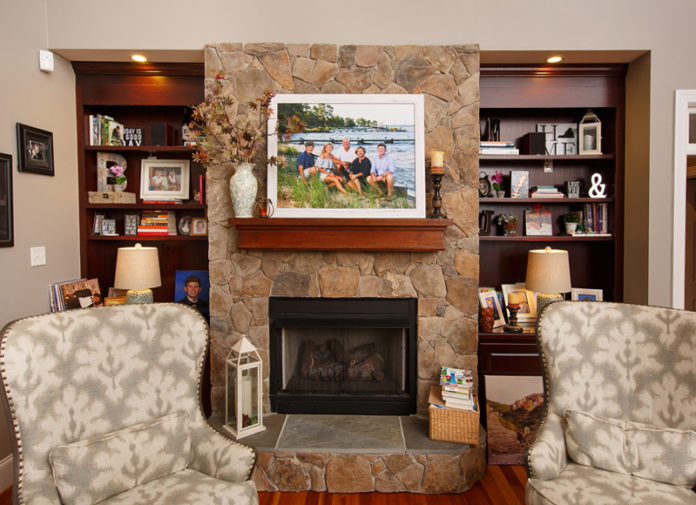by Mary Fisk-Taylor
One of the best ways to start working on a sales plan for a photography studio is to actually start with the products that you are going to sell. First, you want to make sure that your product offerings are in line with the studio brand you have worked so hard to develop. Your product lines should offer a BASIC, a BETTER, an AWESOME and a WOW.
According to Dr. Paul Rodway, it’s common in commerce to present customers with choices. Most people choose the middle choice. So, when reviewing your creation fees, products, collections, and packages, make sure that what you want for your clients to buy is in the middle… the “Better-to-Awesome” range. Assuming that you understand your cost of goods and all of your offerings are priced correctly, these Better-to-Awesome options should ensure that you hit your average sales with the majority of your sessions.
Of course, you’ll have some that hit below that average/middle and others who will hit above it. However, as a general rule, you should meet your projections and meet your sales goals if you just make sure to have the products you want to sell priced and placed in the middle of your product range. This works with a la carte portrait studios, as well as wedding collections, school packages and even senior portrait collections and commercial work. Whatever it is, make sure you offer them in at least a three-tiered option. When the top option is purchased, it actually makes your middle products seem like less of an investment and the top option to have more value.
 The next piece of the sales plan puzzle is to share these products and your brand with your “ideal client,” someone who finds the perfect solution to their problems or needs in the services or products that your company provides. The ideal client will be someone who is loyal to your company, frequently uses or buys your products or services, and is likely to recommend you to their friends and colleagues. For a small, creative business, the best way to connect with your ideal client and share your brand is to partner with associations, businesses, and services that they patronize. Once you partner with like-minded businesses, charities or organizations, you are more than likely to communicate both your products and your brand with that group of consumers in a more authentic and simple way. For example, if you partner with a realtor that sells homes in an area that you know is a good fit for your family portrait business, you have a brand ambassador telling their clients that you are the right choice for their next portrait session. Perhaps they gift every new homeowner with a complimentary session to your studio for a family portrait. Hopefully, they can show off their own family portrait in their office that you created. These types of partnerships are golden when they are found.
The next piece of the sales plan puzzle is to share these products and your brand with your “ideal client,” someone who finds the perfect solution to their problems or needs in the services or products that your company provides. The ideal client will be someone who is loyal to your company, frequently uses or buys your products or services, and is likely to recommend you to their friends and colleagues. For a small, creative business, the best way to connect with your ideal client and share your brand is to partner with associations, businesses, and services that they patronize. Once you partner with like-minded businesses, charities or organizations, you are more than likely to communicate both your products and your brand with that group of consumers in a more authentic and simple way. For example, if you partner with a realtor that sells homes in an area that you know is a good fit for your family portrait business, you have a brand ambassador telling their clients that you are the right choice for their next portrait session. Perhaps they gift every new homeowner with a complimentary session to your studio for a family portrait. Hopefully, they can show off their own family portrait in their office that you created. These types of partnerships are golden when they are found.
The next step of a solid sales plan is the process of turning a prospect into a client. This process usually starts with a phone call or email asking them some key questions and truly listening to the answers. We must understand who they want photographed and what they want their finished product to be. Assuming they have a budget that fits within your product lines, you can start developing a photography plan for this potential client. Once that is accomplished, invite them in for an in person meeting or telephone design session.
The portrait consultation is one of the most important parts of this entire process. Because communication is the vital element of any relationship, we make a point of listening and educating the client, allowing the client to explain what types of portraiture they are interested in doing. We even ask clients to bring in, email or text us pictures of their family (if they can’t attend the consultation), and any areas in their home where they are considering displaying artwork.
 By viewing pictures of the children prior to the sitting, we automatically know whether there are any body issues, facial irregularities, hair and skin color types that should be taken into consideration in the camera room. We don’t want any surprises on the portrait day. The pictures of their home tell us everything else including color schemes, whether or not they have any other large portraiture or artwork on their walls, the direction of sunlight in the rooms, and their overall taste in home décor. During the consultation, we can refer to these facts and design the actual session to complement their space.
By viewing pictures of the children prior to the sitting, we automatically know whether there are any body issues, facial irregularities, hair and skin color types that should be taken into consideration in the camera room. We don’t want any surprises on the portrait day. The pictures of their home tell us everything else including color schemes, whether or not they have any other large portraiture or artwork on their walls, the direction of sunlight in the rooms, and their overall taste in home décor. During the consultation, we can refer to these facts and design the actual session to complement their space.
At the consultation, we also explain that we will do all of the sales and decision-making in person. We discuss general sizes for a portrait or a portrait grouping depending on the spaces in their home and measurements that they will supply. This allows us to quote their creation fee as well as the pricing of the portraits they may purchase. At this time, we may also choose some framing corners that complement their home and the portraits we are planning. The consultation concludes with a very dedicated and well-informed client.
When clients leave the studio after the consultation, they have a full knowledge of where the portrait will be created, the clothing that should be worn, the approximate sizes of the portraits, the general pricing, and several framing options. The great news for us is that we have practically pre-sold the portraits and frames before they have even been photographed. Also, if the ballpark price is not a comfortable level for them, we give the opportunity right then and there to go home and think about what we have discussed. If they are okay with the pricing and excited to get started, we try to schedule their session on the spot.
Very few clients cancel their scheduled sessions, and our portrait averages are exactly where we want them to be. By educating and including your clients as much as possible, you create a much more willing and committed client, with the result being a happy client and a successful studio.
 Join Mary Fisk-Taylor and Jamie Hayes at Texas School. Their course is not just about business. It also covers the creative and technical aspects that result in products your clients will love. Learn more about them at www.HayesAndFisk.com or their class at www.TexasSchool.org.
Join Mary Fisk-Taylor and Jamie Hayes at Texas School. Their course is not just about business. It also covers the creative and technical aspects that result in products your clients will love. Learn more about them at www.HayesAndFisk.com or their class at www.TexasSchool.org.











